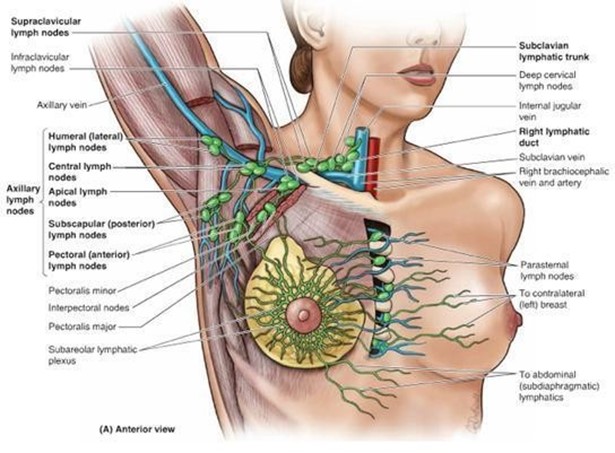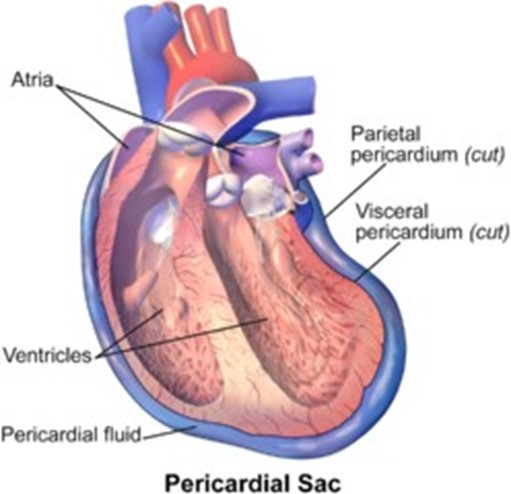The lymph nodes of the axillary region receive lymph mainly from the:
Upper limb and mammary gland.
Abdominal viscera.
Scalp and face.
Thoracic viscera.
The Correct Answer is A
The lymph nodes of the axillary region receive lymph mainly from the upper limb and mammary gland.
This is because the axillary lymph nodes are located in the armpit area and drain the lymph vessels from the lateral quadrants of the breast and the arm.

Choice B is wrong because the abdominal viscera are drained by the celiac, superior mesenteric, and inferior mesenteric lymph nodes.
Choice C is wrong because the scalp and face are drained by the cervical lymph nodes.
Choice D is wrong because the thoracic viscera are drained by the bronchopulmonary, tracheobronchial, parasternal, and posterior mediastinal lymph nodes.
Nursing Test Bank
Naxlex Comprehensive Predictor Exams
Related Questions
Correct Answer is C
Explanation
The conversion of fibrinogen to fibrin by thrombin is the final step in the formation of a blood clot.
Fibrin is a protein that forms a net-like structure that traps platelets and other blood cells, making the clot stronger and more durable.
Choice A is wrong because the formation of a prothrombin activator is the first step in the formation of a blood clot.
A prothrombin activator is a complex of enzymes that converts prothrombin to thrombin.
Choice B is wrong because the conversion of prothrombin to thrombin by the prothrombin activator is the second step in the formation of a blood clot.
Thrombin is an enzyme that converts fibrinogen to fibrin.
Choice D is wrong because tissue damage is not a step in the formation of a blood clot, but a trigger for the clotting process.
When blood vessels are injured, they release substances that activate platelets and clotting factors.
Correct Answer is A
Explanation
The fibrous pericardium is the loose-fitting sac around the heart that protects it and anchors it to surrounding structures.

Choice B is wrong because the epicardium is the outer layer of the heart wall, also called the visceral pericardium, and it is not a sac.
Choice C is wrong because the endocardium is the inner layer of the heart wall that forms the lining of all heart chambers, and it is not a sac.
Choice D is wrong because the visceral pericardium is another name for the epicardium, and it is not a loose-fitting sac.
Whether you are a student looking to ace your exams or a practicing nurse seeking to enhance your expertise , our nursing education contents will empower you with the confidence and competence to make a difference in the lives of patients and become a respected leader in the healthcare field.
Visit Naxlex, invest in your future and unlock endless possibilities with our unparalleled nursing education contents today
Report Wrong Answer on the Current Question
Do you disagree with the answer? If yes, what is your expected answer? Explain.
Kindly be descriptive with the issue you are facing.
